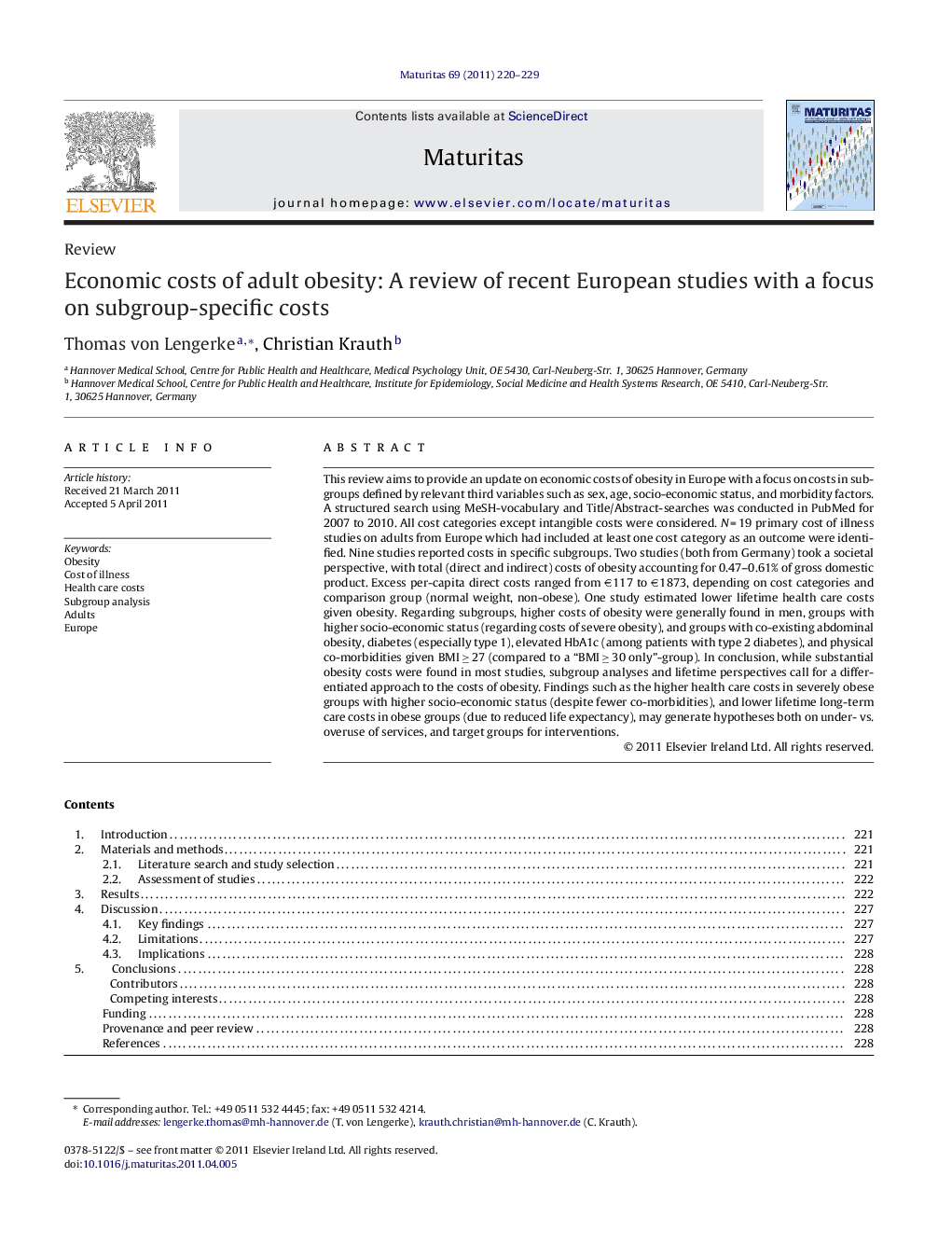| کد مقاله | کد نشریه | سال انتشار | مقاله انگلیسی | نسخه تمام متن |
|---|---|---|---|---|
| 1917929 | 1047930 | 2011 | 10 صفحه PDF | دانلود رایگان |

This review aims to provide an update on economic costs of obesity in Europe with a focus on costs in subgroups defined by relevant third variables such as sex, age, socio-economic status, and morbidity factors. A structured search using MeSH-vocabulary and Title/Abstract-searches was conducted in PubMed for 2007 to 2010. All cost categories except intangible costs were considered. N = 19 primary cost of illness studies on adults from Europe which had included at least one cost category as an outcome were identified. Nine studies reported costs in specific subgroups. Two studies (both from Germany) took a societal perspective, with total (direct and indirect) costs of obesity accounting for 0.47–0.61% of gross domestic product. Excess per-capita direct costs ranged from €117 to €1873, depending on cost categories and comparison group (normal weight, non-obese). One study estimated lower lifetime health care costs given obesity. Regarding subgroups, higher costs of obesity were generally found in men, groups with higher socio-economic status (regarding costs of severe obesity), and groups with co-existing abdominal obesity, diabetes (especially type 1), elevated HbA1c (among patients with type 2 diabetes), and physical co-morbidities given BMI ≥ 27 (compared to a “BMI ≥ 30 only”-group). In conclusion, while substantial obesity costs were found in most studies, subgroup analyses and lifetime perspectives call for a differentiated approach to the costs of obesity. Findings such as the higher health care costs in severely obese groups with higher socio-economic status (despite fewer co-morbidities), and lower lifetime long-term care costs in obese groups (due to reduced life expectancy), may generate hypotheses both on under- vs. overuse of services, and target groups for interventions.
Journal: Maturitas - Volume 69, Issue 3, July 2011, Pages 220–229